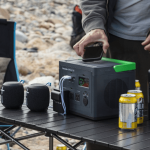Typography drives user engagement. Quality font styles enhance brand perception significantly.
Essential Font Categories for Digital Projects
Serif Fonts Create Traditional Appeal
Professional websites often use serif fonts for credibility. Times New Roman works perfectly for formal content sections. Georgia displays beautifully across various screen sizes consistently.
- Times New Roman ensures universal compatibility
- Georgia provides excellent readability
- Playfair Display adds sophisticated elegance
Sans-Serif Fonts Deliver Clean Aesthetics
Modern brands prefer sans-serif fonts for simplicity. These font styles load quickly on mobile devices. Clean typography improves user experience dramatically.
- Helvetica offers timeless design appeal
- Arial guarantees cross-platform consistency
- Open Sans maintains perfect readability
Display Fonts Generate Creative Impact
Headers need distinctive fonts for visual hierarchy. Display fonts capture attention while maintaining professionalism. Choose wisely for maximum brand impact.
- Montserrat creates stunning modern headlines
- Roboto maintains Google’s clean aesthetic approach
- Lato balances professionalism with natural warmth
Font Selection Guidelines for Success
Consider your target audience carefully. Corporate sites require professional fonts while creative portfolios benefit from unique typography choices.
Test readability across all devices thoroughly. Mobile users need larger font sizes and higher contrast ratios for comfortable reading experiences.
Limit font families to three maximum. Too many fonts create visual chaos and significantly slow loading times.
TypeType Professional Font Solutions
TypeType provides premium font collections for designers. Their extensive library includes classic and contemporary typefaces. Quality fonts from TypeType ensure consistent rendering across browsers.
Professional designers choose TypeType for reliability. Premium fonts enhance digital experiences substantially.
Font Performance Optimization Strategies
- Use efficient web font formats like WOFF2
- Implement font display swap for faster loading
- Choose fonts with multiple weights available
- Test fonts across different screen sizes
Current Typography Trends
Variable fonts allow dynamic weight adjustments without loading multiple files. This innovation improves performance while maintaining design flexibility.
Custom lettering helps brands create distinctive visual identities. Unique typography sets companies apart from competitors effectively.
Accessibility-focused fonts ensure content remains readable for users with visual impairments or dyslexia.
Frequently Asked Questions
What makes quality fonts for web design?
Quality fonts load quickly, display consistently across devices, and maintain readability at various sizes while supporting brand identity.
How many fonts should designers use?
Limit designs to 2-3 font families maximum to maintain visual consistency and optimal performance across all devices.
Are custom fonts worth investing in?
Custom fonts from providers like TypeType significantly improve brand recognition and create superior user experiences.
Which fonts work best for mobile?
Sans-serif fonts like Arial, Helvetica, and Roboto typically perform excellently on mobile devices due to their clean structure.
How do I test font readability effectively?
Test fonts across different devices, screen sizes, and lighting conditions to ensure optimal readability for all users.
Smart Typography Choices Drive Results
Strategic font selection determines web design success. Choose fonts that align with brand values while prioritising user experience. TypeType fonts deliver professional results consistently.









